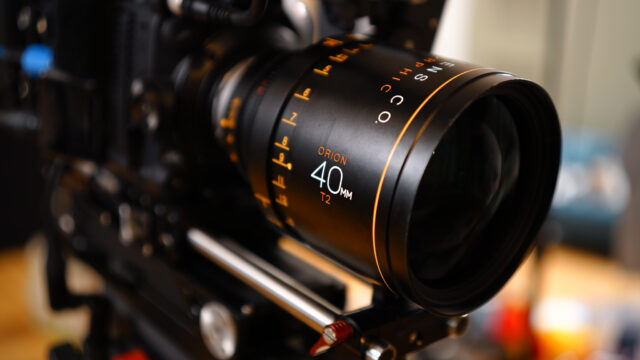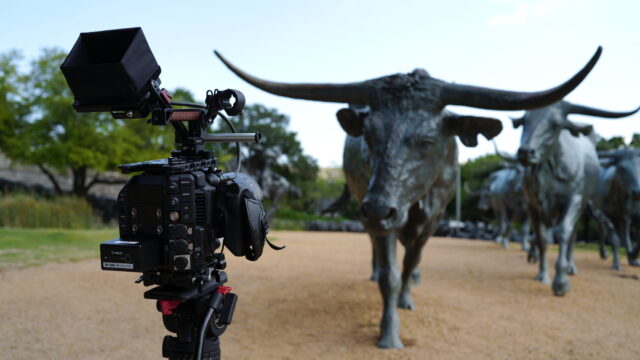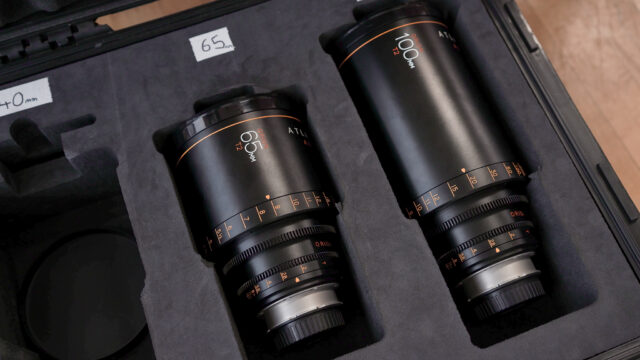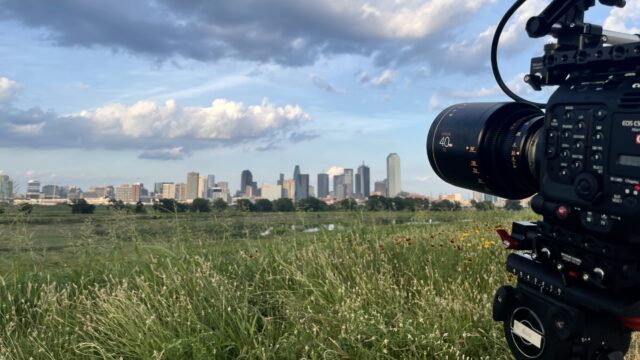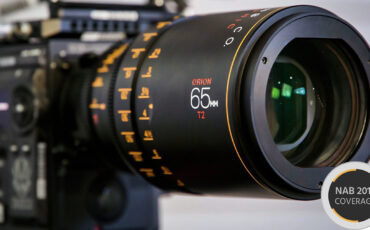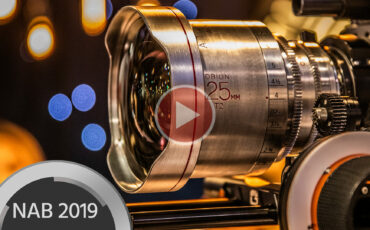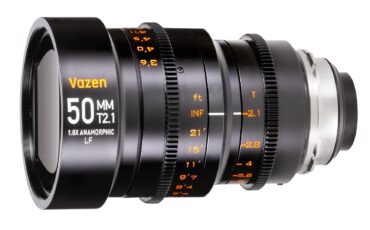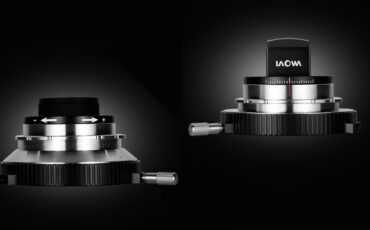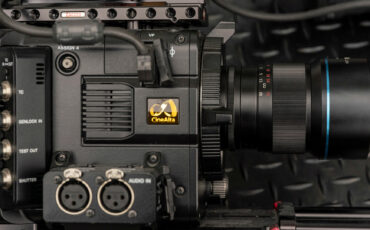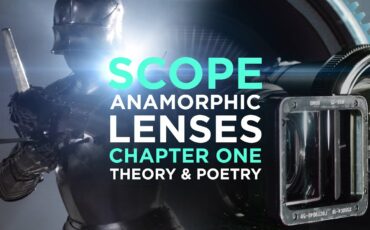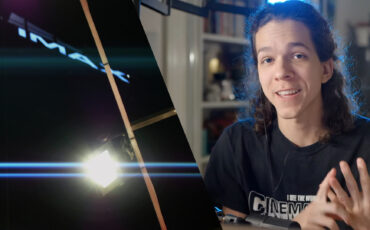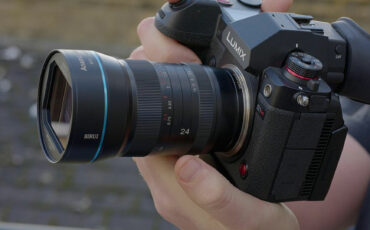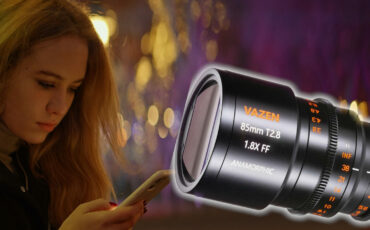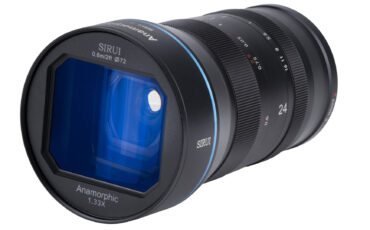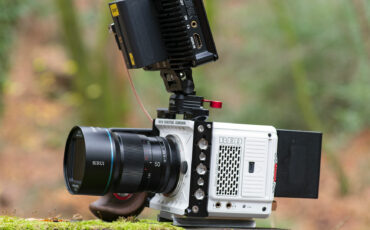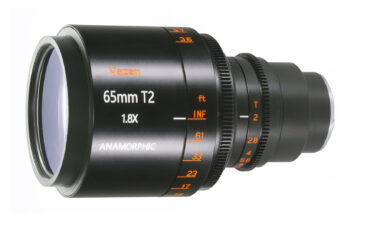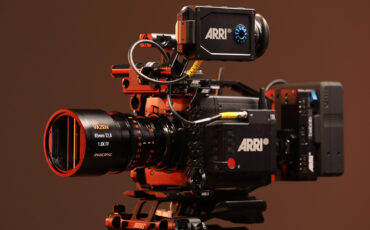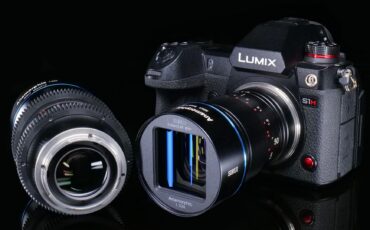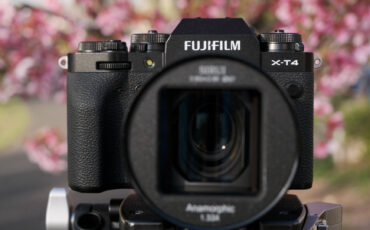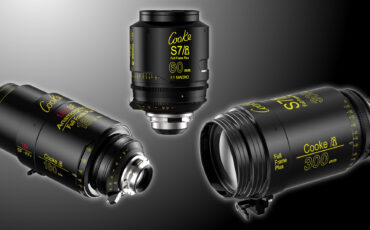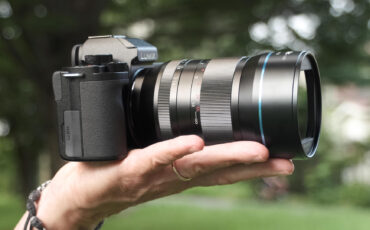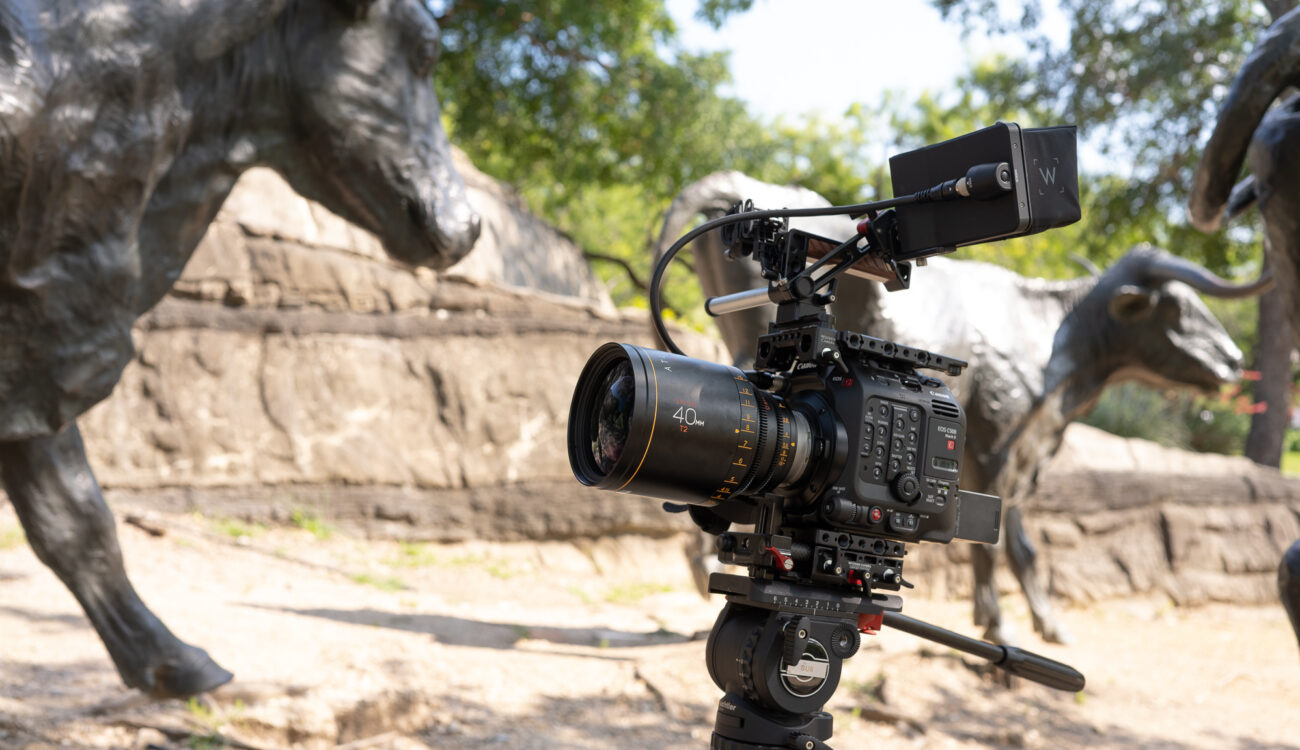
Back in 2019, I caught a glimpse of the Atlas Orion anamorphic lenses and was immediately intrigued. At the time, we were seeing a surge in fast and affordable spherical lenses that cover full-frame, and Atlas Lens Co., on the anamorphic side, was ahead of the pack in terms of price point. At $8.999, the Atlas Orion prime is affordable, at least when compared to the Master anamorphic series available on B&H for $48.000. Since 2019, a few other low-cost competitors, such as Sirui and Vazen, occupy a place several thousand dollars below the Atlas Orions. Since there are already plenty of shots of lens charts out there, my hope is this article will serve as part field test and part introduction to anamorphic for those getting started in this niche.
Using the Atlas Orion lenses A-set with their 2X squeeze and a Canon C500 MK II shooting 5.9K Canon Raw Light, I shot a cereal commercial in San Diego and a yet-to-be-announced project in downtown Dallas (both during the day and night).
Because the 5.9K full-frame RAW out of the C500 MKII is absolutely lovely, it seemed like a fertile testing ground for these optics. Canon is also introducing a potentially phenomenal update for the Canon C500 MK II that lands at the end of July 2021. The addition of both 4:3 and 6:5 sensor modes when shooting in Canon Raw Light represents a genuine embrace of the anamorphic format by that camera system.
Initial considerations
First, why shoot in anamorphic?
While there’s an undeniable cinematic look to the wide-aspect ratios most associated with anamorphic shooting, and your particular project might lend itself to that stretched-out horizon, there are also unique optical qualities such as oval bokeh or vertical and horizontal flare characteristics we all know and love. In general, anamorphic lenses tend not to be as tack sharp as their spherical lens equivalent, and I found that to be the case with the Atlas Orions too. This characteristic shouldn’t be seen as a drawback as we don’t need to see every. single. pore. on our actors’ faces.
The Art & Science of Lenses
Another hallmark of the “anamorphic look” is the ability to capture an out-of-focus background with a wider angle of lens when compared to spherical. Any other hallmarks of anamorphic that I’ve missed? Let me know in the comments below!
There’s great content about the history of anamorphic out there, and I encourage you to research the fascinating origin of this format. Here’s a 10-minute snippet from the Anamorphic on a Budget channel:
A quick note on aspect ratio and a question I get asked a lot: Yes, for desired optical qualities, you can still shoot anamorphic but deliver in the required 16×9 format, knowing that the wide aspect will be lost in the process. This process is what DoP Rachel Morrison had to do for HBO’s Confirmation, and she goes into that process here.
First impressions – the optics:
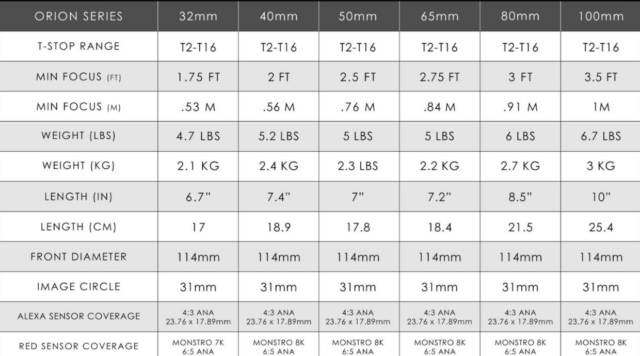
Atlas Orion series lenses have been tricky to get a hold of for some years now, and at one point, there was a considerable lead time on placed orders. Since then, acquiring these lenses has become easier, and now, for the first time in years, Atlas Lens Co. has both the sets and individual primes in stock and ready to be shipped. There’s also a good selection of rental options available in most of the major markets in North America and Europe, and Atlas Lens Co. helpfully lists many of them here.
The Orion Series ships in two distinct sets as either EF or PL. An A-Set costs $26.997 and includes the 40, 65, and 100mm. The B-Set costs $27.997 and includes the 32, 50, and 80mm. Atlas Lens Co. was nice enough to send me the A-set for testing, and for me, in terms of all-around shooting, this set feels like the most versatile of the two. The lenses are user interchangeable between EF to PL and vice versa (new mounts cost $299 each) – another nice touch that should future proof things a bit. There has also been a 25mm Orion prototype floating around for a few years now, and hopefully, we’ll see that added to the lineup, as well.
Another question I get asked a lot is if somebody can only afford to buy one lens, which lens would I recommend? My answer is the 40mm. This is a classic anamorphic focal length and most of Chinatown was shot with this lens. When compared to a 40mm spherical equivalent, the 40mm anamorphic lens is quite wide. Depending on the project, you might be able to get away with running on a 40mm the entire time. The second lens to pair with a 40mm? Go for the 100mm and budget allowing, build from that point.
The first thing you might notice about the Atlas Orion series is the physical size – substantially larger than the average spherical prime. The series is also heavier in weight (the Orion 100mm tops out at 6.7 lbs/3 kg.) but with a comparable physical footprint of 4.15 lbs/1.9kg (T2.0 SIGMA 50-100 Cine zoom). None of this is a dealbreaker. Just know that a rod and lens support system will be your friend with any of the six currently available Atlas Orion series primes, same story with the new Silver Edition series (more on the new lineup later). You’ll want lens support, mainly when using the standard click-in Canon EF mount. As for me, I feel a bit safer with either the Canon PL or locking EF mount.
Camera setup
The Canon C500 MK II, in particular, is easy to set for anamorphic viewing. Simply head over to the “Monitoring Setup” tab in the menu and navigate to “Anamorphic Desqueeze,” and then set your squeeze factor at 2.0x to match the Atlas Orion lenses. You could also set your Desqueeze ratio to 1.3x for using other types of glass like the considerably pricier Hawk Anamorphics.
An odd quirk of the C500 MK II: when shooting in Slow & Fast mode (S&F for short), you need to navigate to “Desqueeze for S&F,” and the display will be reduced in size. It’s exactly what it sounds like – your Canon monitor suddenly displays an image a third of the size of normal. This reduction makes operating tricky, but external monitors can compensate for this by zooming or cropping in manually.
Lens character

Diving deeper into sharpness, I found that the settings between T2.8 and T5.6 were the sharpest for these lenses, and all the way open at T2.0 was a bit too soft for my taste. However, all the way open at T2.0 undoubtedly have a similar level of sharpness to vintage lenses I’ve used, and fans of retro lens design (all the rage right now) might feel right at home at T2.0 with a corresponding sharp digital sensor.
I also appreciate the horizontal blue flare character of these lenses and didn’t find them too distracting (see the image of the cereal-eating parrot above). If you find the flares too blue, you could also dial the saturation up or down using Premiere. You can fake this type of flare using Schneider True Streak filters and get fairly close (don’t kill me), but in my opinion, the True Streaks don’t feel as organic and are too clean, and of course, you aren’t getting the stretched aspect ratio or the oval bokeh.
Depending on your camera distance to horizontal lines in the frame, you will occasionally see fisheye distortion that will make lines bow slightly in that frame. This is normal on anamorphic primes and any wide-angle spherical lenses, for that matter. It is most evident in the Atlas Orion 40mm, and it probably exists in the 32mm – though I haven’t had a chance to test that. You could mitigate this by simply backing up far enough with your camera so the distortion doesn’t read quite as easily in the shot. There are a ton of video guides in DaVinci, Premiere, or Final Cut about handling lens distortion.
When lighting your project, you’ll want to consider doing tests in advance using your particular lighting package to see how the flares of the Atlas Orions interact with your lights. Headlights, headlamps, flashlights, spotted fresnel, Leko/spotlight, and other hard light sources like streetlights aimed directly at the lens can look great. Still, occasionally some sources you expect to flare might disappoint. As always, test and then test again and then make strategic decisions about whether these flares are helping or a distraction (like obscuring your main character’s eyes in a crucial moment).
Orion series – Silver Edition
Atlas Lens Co. has recently launched a new limited Silver Edition line of 2X anamorphic lenses that can only be purchased in the complete set of six focal lengths for $89.000 (not including shipping and handling).
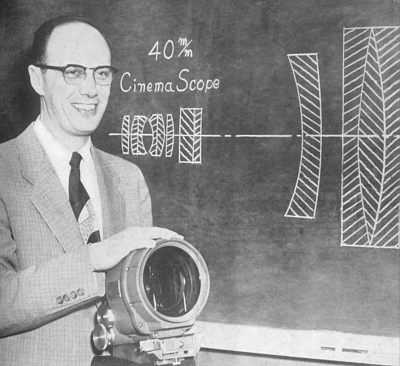
I spoke with Atlas Lens Co. co-founder and cinematographer Dan Kanes for his insight on why the company created the limited 100 unit (six focal lengths per unit) run of the Silver Edition line. Here’s what he had to say:
“The Silver Edition series is meant to pay homage to the silver screen era of Hollywood (mid-50’s). Orion was meant to be a workhorse anamorphic lens in a way that was never available before. With the Silver Edition we wanted to drill down a little more and get into vintage lenses and in particular the Bausch & Lomb Optical Co. baltar Cinemascope was an influence for us. Two of the things I really love about the Silver Edition Series: 1) they flare and match the color of the light source and you can make silver streaks by matching the color temp of the light source. 2) The focus feels similar to the Bausch & Lomb Optical Co. baltar Cinemascope. 25% foreground falloff and through focus after the focus point is held 75%. We also looked at how we think Leica handles through focus and was influenced by that.””The Silver Edition series is mean’t to pay homage to the silver screen era of Hollywood (mid-50’s). Orion was mean’t to be a workhorse anamorphic lens in a way that was never available before. With the Silver Edition we wanted to drill down a little more and get into vintage lenses and in particular the Bausch & Lomb Optical Co. baltar Cinemascope was an influence for us. Two of the things I really love about the Silver Edition Series, 1) they flare and match the color of the light source and you can make silver streaks by matching the color temp of the light source. 2) The focus feels similar to the Bausch & Lomb Optical Co. baltar Cinemascope. 25% foreground falloff and through focus after the focus point is held 75%. We also looked at how we think Leica handles through focus and was influenced by that.”
Dan Kanes, Co-Founder of Atlas Lens Co.
Dan referenced Through Focus several times while speaking with me. That’s an interesting thing, considering I haven’t seen other optical manufacturers touch on it as it relates to the design of their products. There isn’t a wealth of additional materials available for this concept, but I encourage you to give this link a read to learn more about the science behind it.
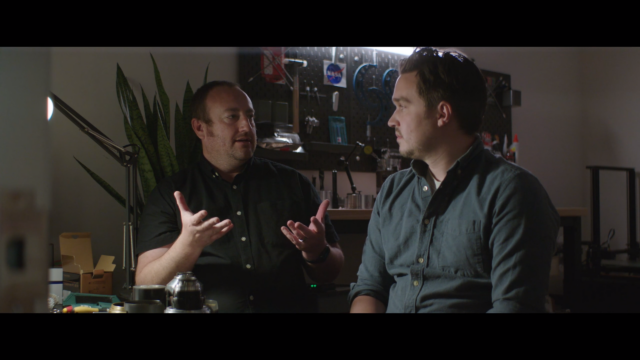
The three low-res comparisons below are all with the 40mm prime from each set at T2.8 and the camera balance set to 56K. These were taken primarily to illustrate the unique flare characteristics from both the Orion Series and Silver Edition Series.
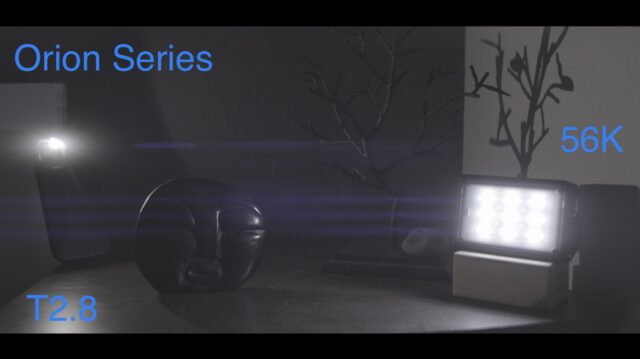
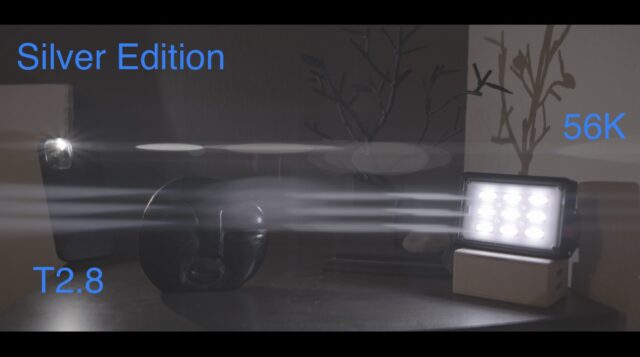
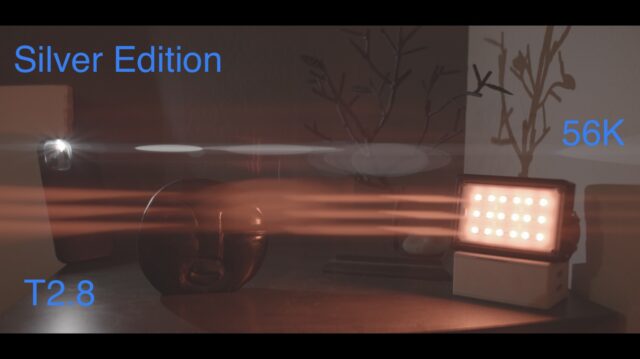
For this post, I mainly focused on the original Orion Series A-set, but there’s much to love about the new Silver Edition series. You’ll have projects better suited for the more vintage-leaning Silver Edition series with an almost 3D pop feel from in-focus objects and some that may be better suited to the Orion series with its more subtle classic horizontal saturated blue flares. The external build quality for both is the same, and I would always encourage direct testing, using different types of lighting during prep to better know where you can put lights in the frame to enhance the image with flares and not pull audience focus from the story.
Post workflow with Adobe Premiere
Keep in mind that, as mentioned above, you can de-squeeze and display the image you are recording on the Canon C500 MK II, but the camera won’t handle the de-squeeze recording in the camera. So, your footage will initially look like the above when played directly off the hard drive.
To de-squeeze the physical footage, you’ll need to interpret the footage on an NLE like Adobe Premiere by clicking on your imported footage and selecting -> modify and interpret footage. Then you can change your pixel aspect ratio to “Anamorphic 2:1 (2.0)”.
Drag the newly modified footage onto your timeline, and your shots will still seem too wide. So, from there, you’ll need to change your sequence settings on the timeline to 4096×1716 and change the “Pixel Aspect Ratio” to square. Then simply go to the effects tab and use the scale tool to scale everything to fit. Exactly how much you’ll need to scale depends on what resolution you shot on with the C500 MK II.
The goal here is to match the aspect ratio you’re viewing in-camera and composing with and carry that through post. The above workflow is worth a quick test during prep. I’m not an editor, but it wasn’t too hard to get the hang of and worked when I wanted to simply view my dailies on my laptop in the evening at the hotel.
Conclusion
The team at Atlas Lens Co. bills the Orion Series as “anamorphic for all of us.” That’s a lofty ambition and one I admire; however, for many owners/operators, the per-prime price tag remains a barrier. Renting, of course, is still a possibility, so maybe the tagline should be changed to “anamorphic for most of us.”
After testing, I found myself a big enough fan of the Atlas Orion series that I purchased the 40mm T2.8 and 100mm T2.8 with a goal of one day filling out the A-Set with the 65mm. As a longtime fan of anamorphic, I’ve always been aware of the until now astronomical price of entry, so it’s a thrill to be able to gain regular access to this format with the 4:3 sensor firmware upgrade coming soon to the Canon C500 MK II.
With a month of steady anamorphic filming paired with the Canon C500 MK II under my belt, I’ve found lots to love about the Orion series. The robust quality built, PL/EF mount flexibility, blue horizontal flares, and just the right amount of sharpness for me when living between T2.8 and T5.6 are impressive. These lenses don’t feel clinical. They have just enough character to find a home on most of my productions requiring an anamorphic feel but don’t have so distinct a burned-in look that their broad project-to-project appeal is limited. Two thumbs up!
What do you think? Have you had a chance to try out the Orion series for your work? What were your thoughts? Let us know in the comments below!
Note: A very special thanks to director Thierry Denis and the California based Raindrop Agency for their help with this article.
